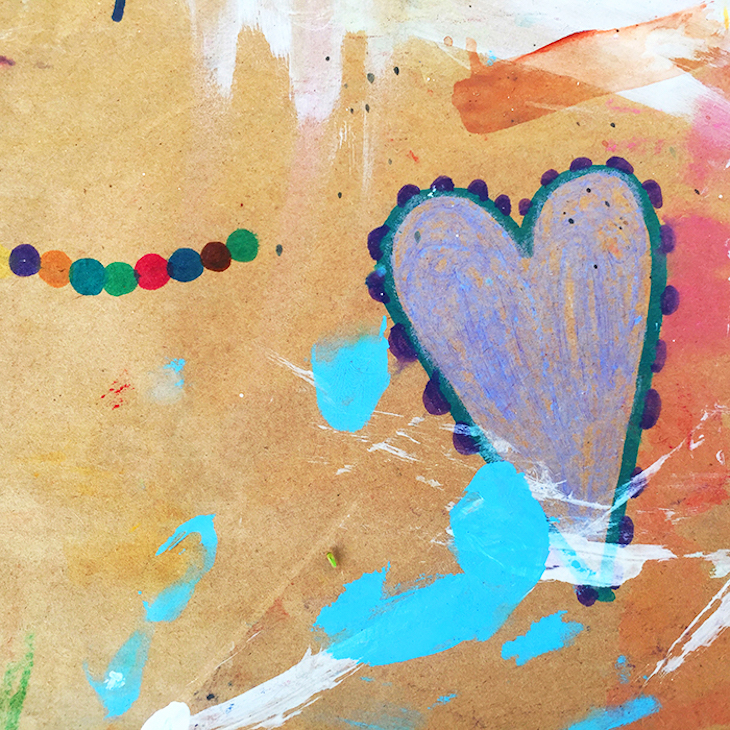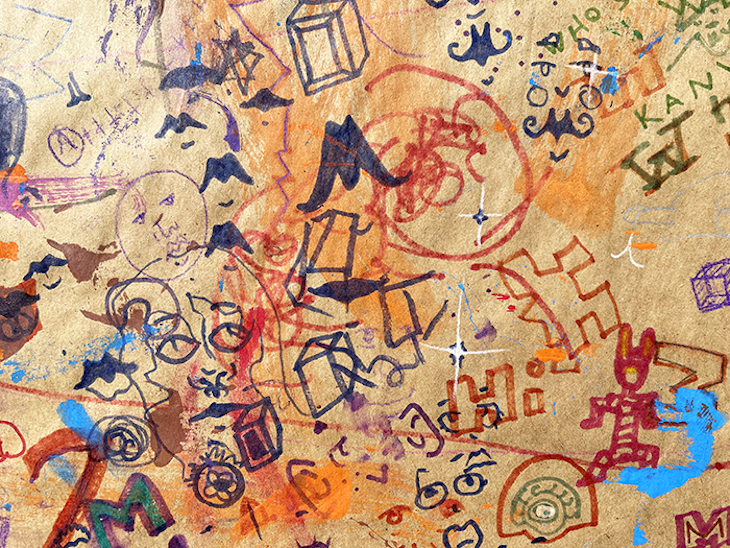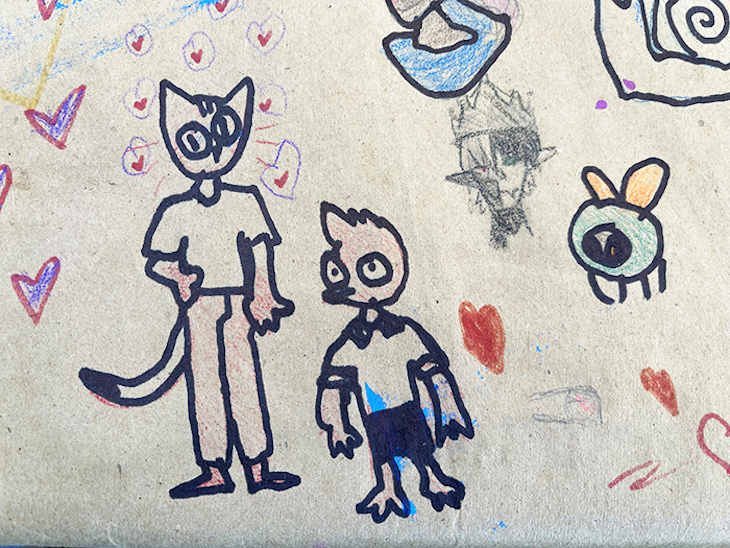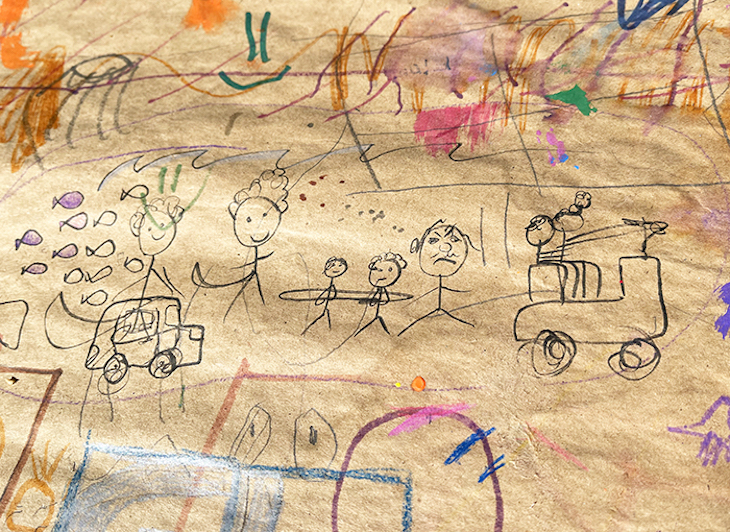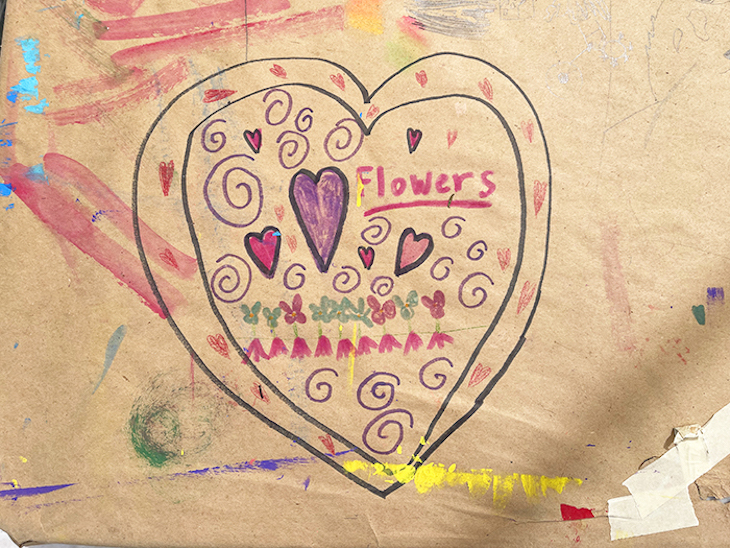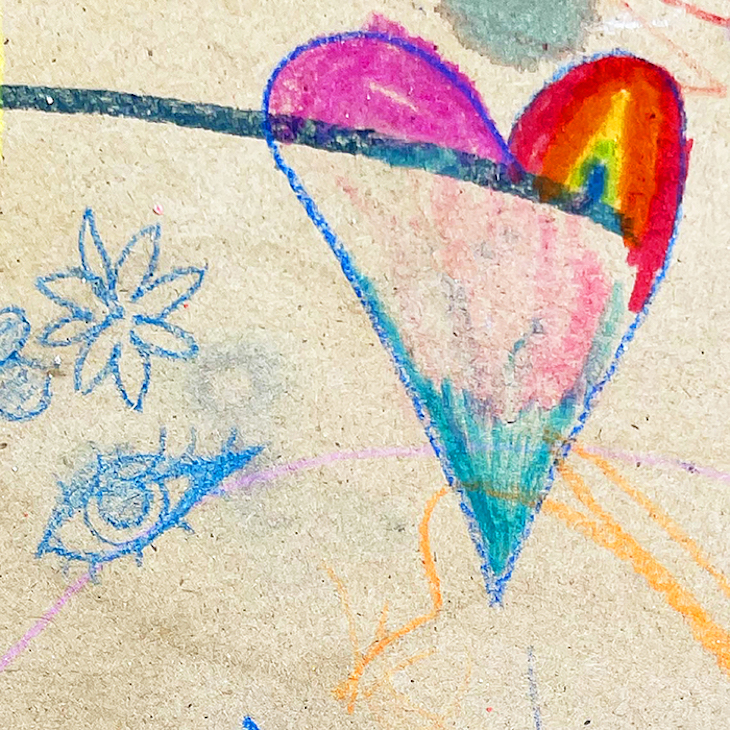The Art of the Doodle

By David Powdrell
So here’s the deal…I’m going a bit out on a limb with today’s Edhat photojournalism article. I want to talk about and share some images related to doodling, the underappreciated act of drawing or scribbling aimlessly. Some call it drawing absentmindedly. Some refer to doodling as drawing as the mind wanders.
Lots of great artists, inventors, leaders, musicians and businesspeople were or are doodlers. Claude Monet was an avid doodler. Steve Jobs, Pablo Picasso, Josephine Baker, George Gershwin, Joan Miro, Harry Houdini, Mark Twain, Queen Victoria, JRR Tolkien, Leonardo Da Vinci, Frida Kahlo, Lewis Carroll, Art Garfunkel, Leonard Cohen, and Bill Gates; all doodlers. Dozens of U.S. Presidents were doodlers including Ronald Reagan and Barack Obama.
Backstory: On occasion I photograph kids studying fine art at the Arts by the Sea Summer Camp at the Lynda Fairly Carpinteria Arts Center. During the lecture part of the class the kids learn about pixelism, art history and technique, art mediums, famous artists, and much more. Many of the kids doodle during the lecture portion of the class drawing random images on large butcher paper taped down on the picnic table.
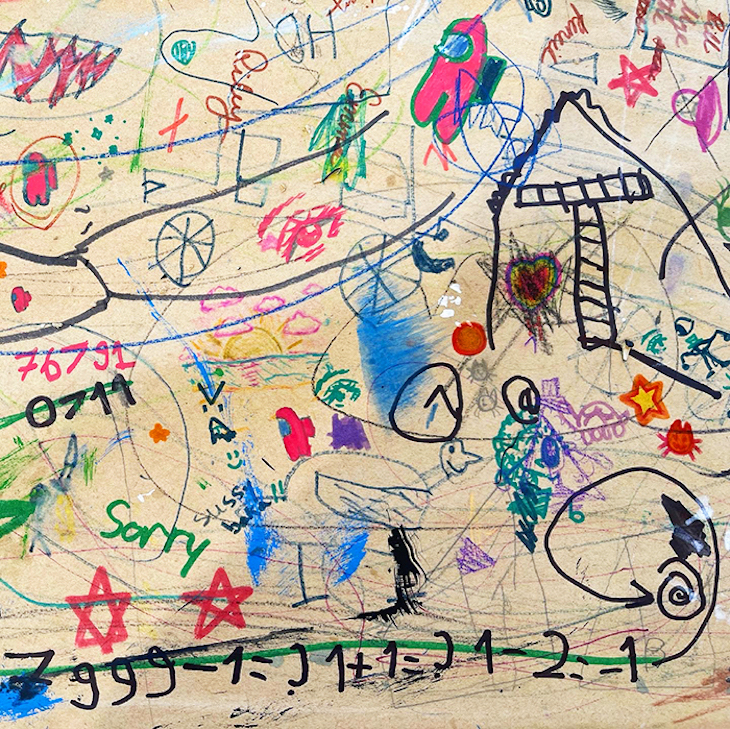
On Friday afternoons, after a weeklong session and after the kids have gone home, I stop by and capture photo images of their seemingly mindless doodling. I find it artful, thoughtful, creative, interesting, unique, and fun.
Doodling is an artform not intended to be typically showcased. By sharing a few photo images with you, I hope to reintroduce you to the unique artform of the doodle, but also to highlight many of the educational benefits of doodling. Some claim there’s a doodle revolution going on.
Doodling, I was surprised to learn, has been found to have a slew of educational benefits. While it may seem counterintuitive, research suggests that doodling can aid in focus and information retention.
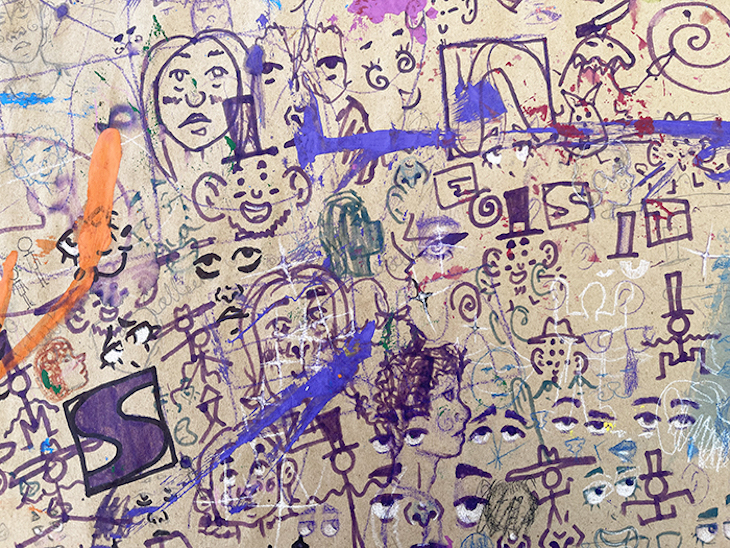
1. Enhanced Focus: Doodling can help individuals maintain attention and prevent their minds from wandering.
2. Improved Memory and Information Retention: Doodling can be a form of active learning, as it allows individuals to visually represent and reinforce information. Studies have shown that doodling while listening to a lecture or participating in a meeting can improve memory recall.
3. Enhanced Creativity and Problem-Solving: Doodling can stimulate creative thinking and problem-solving skills. By engaging in free-flowing doodles, kids can tap into their imagination and explore new ideas.
4. Stress Reduction and Relaxation: Doodling has a calming effect and can help reduce stress and anxiety.
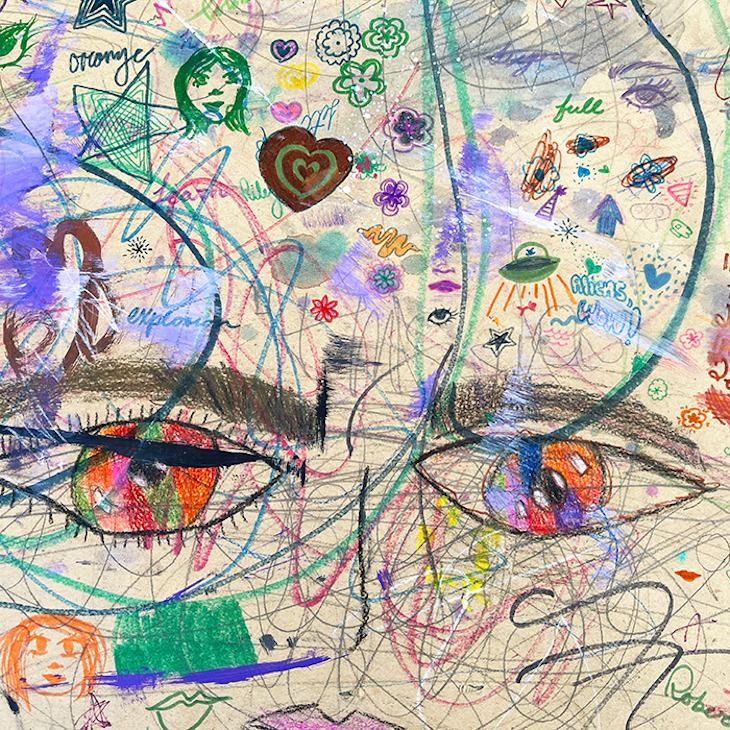
Doodling isn’t for everyone. Some people find it distracting, or a struggle to concentrate, while doodling. Be mindful of one’s own learning preferences and adapt accordingly, but if you’re into it, keep going. The benefits are likely to exceed the detriments. Who knows, you might even become famous one day.
As Picasso once said, “All children are artists. The problem is how to remain one once we grow up” and as Sue Shellenbarger notes “A blank page also can serve as an extended playing field for the brain, allowing people to revise and improve on creative thoughts and ideas.”
